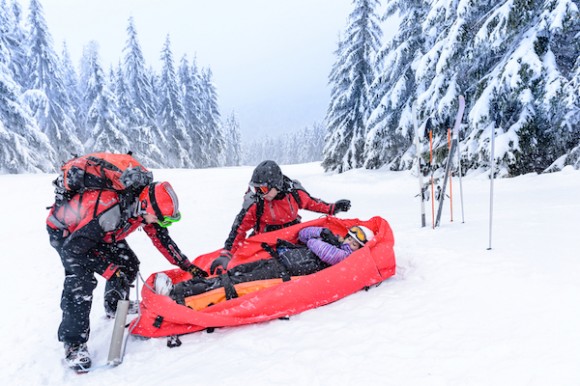Skiing is one of the most exhilarating outdoor activities that you can do. There are few things in the world more exhilarating than flying down snowy slopes at amazing speeds, zipping in and out of trees, dodging fellow skiers, and feeling at one with the world. Like all snow sports, it’s a wonderful pastime!
But, as with all snow sports – and all sports, in reality – there is a very real potential for injury. Understanding what the most common ski injuries are can help you to avoid them, or at least be ready for them when they happen to you.
The Most Common Ski Injuries
Modern ski equipment has been designed with user safety and protection in mind, so the risk of injury is much lower than it once was. The ski boots do a lot to protect the ankles and feet, and the ski gloves, pads, and helmets provide padding for the rest of the body. Unfortunately, these things can’t really protect from falls, which account for up to 85% of skiing injuries according to the American College of Sports Medicine. Falls can lead to fractures, sprains, wounds, and broken bones.
However, falling isn’t the only thing that can cause injuries. According to the ACSM, there are a few injuries fairly common among skiers:
MCL Injury — The medial collateral ligament is found in the knee, and MCL injuries are THE MOST COMMON among skiers. The ligament is damaged when a skier falls slowly while twisting their knees, or when they ski in the snowplow position (pointing their toes inwards to slow their momentum). The MCL can be sprained, or even torn.
ACL Injury — Another common injury is an ACL injury, damage to the anterior collateral ligament also found in the knee. This is the result of a sudden twisting motion, or when the upper body falls backwards as the lower leg moves forward. This injury can be very painful, and it can require extensive surgery to repair.
Skiers’ Thumb — This is an injury fairly unique to skiing, as it is the result of falling with the ski pole still in your hand. When you reach forward to catch yourself with the pole in hand, the pole places what is called a “bending stress” on the thumb joint. It is basically a sprain to the ligament of the thumb, and it can reduce the grasping and gripping abilities of the person suffering from the injury.
Treating Ski Injuries
Dealing with pain management and injury relief for ski accidents will depend on the severity of the injury. For minor injuries, a splint or bandage will be applied to the injury to immobilize it. This will allow the injured body part time to heal, and will reduce the pain and swelling.
For more serious injuries, surgery may be required to repair the ligaments or tendons that have been torn. Broken bones need to be set, and gashes resulting from falls will probably need stitches.
Joint pain is another common injury that will need to be treated. For problems like skiers thumb or lower back pain, radiofrequency ablation is a good option to consider. The treatment involves the use of a needle, which allows doctors to run an electrical current to the tissue surrounding the painful area. The electrical current damages the nerve endings in the painful area, preventing them from sending pain signals to the brain. It is a fairly simple outpatient procedure – no lengthy hospital stay – and it can be very effective for dealing with the pain from an injury. If you’ve got problems with pain thanks to your skiing injuries, it’s wise to consider less invasive treatment methods like RFA.
Author BioMarianne S. Ross is health and fitness researcher, writing about improving mental and physical well-being and moving to a healthier lifestyle. If her article got you interested, feel free to leave a comment below.








